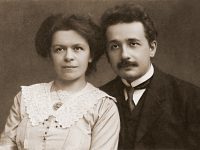The traditional exclusion of women from the public sphere, from education, politics, art and culture, as well as women’s confinement to the domestic realm, have –little by little– undergone steady change since the Enlightenment, with the liberalisation of society and women’s progressive admittance to public life. From a feminine world revolving around motherhood, women have taken over new spheres, conquering rights and social roles bestowed regardless of gender, namely universal civil rights, suffrage, education and non-discrimination.
Needless to say, women’s admission to the public sphere has not transpired evenly nor equally across societies, regions of the world, cultural traditions (rural versus urban), social classes or professions. Rather, women were initially to be found among the ranks of housewives, nurses, cigar sellers, social workers and in fields where the so-called «feminine attributes» fit in with the cultural model of female sensitivity and women’s devotion to others. The professional world of science and technology has been monopolised by men until very recently. Nowadays women are to be found working at universities and in the professional world; however, we must still ask ourselves whether there are actually equal rights and opportunities in all fields of science and technology.
Here, we do not seek to make an in-depth assessment of the traditions, hurdles and milestones marking the relationship between women and science; rather, this monograph aims to provide a pluralistic overview from the perspectives of history, anthropology, social sciences, and modern science. We recount case studies and offer general reflections on this ongoing challenge, which –to my understanding– are a true mirror of the dynamic transformation Western society has undergone.





